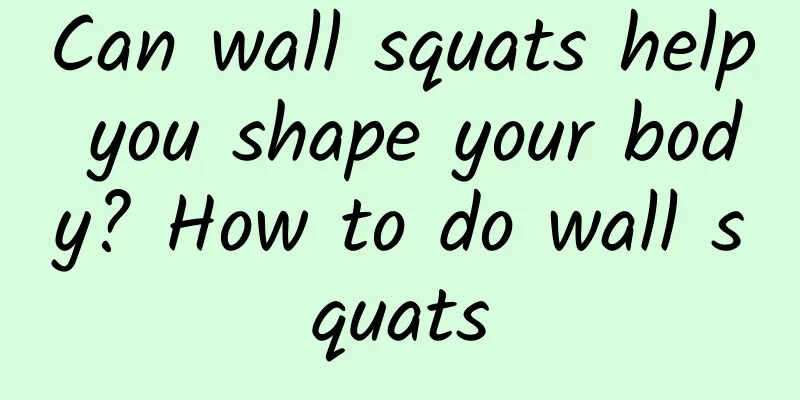Can a waist belt improve hunchback? Can a waist belt help hunchback?

|
A corset is helpful in improving hunchback, because after the corset is tied, the waist will be very straight, and the hunchback will naturally straighten up. The reason why many people have hunchback is actually that they have no strength in the waist. Can a waist belt improve hunchback?There is an improvement effect, but it is likely to return to its original state after removal. A harder waist protector can provide a certain amount of support during exercise, support the excessively bent waist, reduce the force on the muscles, and protect the waist from sprains or soreness. Some functional waist protectors have metal sheets on the back, which can effectively provide greater support and avoid accidental injuries. The back of this type of waist protector is generally higher. Waist belt indications1. Rehabilitation and treatment of diseases such as bone spurs, low back pain, and sciatica. 2. Prevention and auxiliary treatment of lumbar syndrome such as lumbar spondylosis and lumbar muscle strain; 3. Stabilization after lumbar surgery or during the recovery period of lumbar disc herniation; 4. Protection and support for the waist of those engaged in physical labor and the elderly and weak; 5. Eliminate or relieve discomfort in the waist, abdomen and back caused by overwork or fatigue. 6. It can be used to protect the waist in the wild in winter and to tighten the abdomen of women after childbirth or those with large abdomen to maintain a healthy body shape. How to improve hunchback1. Pay attention to the correct posture of the body. Whether standing or walking, the chest should be naturally straight and the shoulders should be naturally stretched back. When sitting, the spine should be straight. When reading or writing, do not lower your head too much, and do not lie on the table. There is some truth in what people say about "standing like a pine tree and sitting like a bell". 2. It is best for growing teenagers to sleep on a hard bed so that the spine can remain straight while sleeping. 3. Strengthen physical exercise. Take physical education classes seriously, do exercises during class breaks, and promote the development of muscle strength. Do corrective gymnastics on the basis of comprehensive exercise. There are many kinds of corrective gymnastics, including various forms of freehand gymnastics and corrective gymnastics using various sports equipment. Correction of hunchback mainly focuses on strengthening back muscles, straightening the trunk and expanding the chest. 4. Sit in a reclining chair, hold both sides of the chair behind your hips with your hands, hold your head high and chest out, stretch your shoulders back, and maintain this position for 10 to 15 minutes each time, 3 to 4 times a day. 5. Stand with your back facing the wall, about 30 cm away from the wall, feet shoulder-width apart, raise your arms and stretch them backwards, while tilting your head back up, touching the wall with your hands and then returning to the original position. Repeat 10 times, 2 to 3 times a day. 6. Lie on your back in bed, place a 6-10 cm thick pad on the protruding part of your hunchback, relax your whole body, stretch your arms naturally, with your palms facing up, and stretch your shoulders back. Stay in this position for more than 5 minutes, and do it 2-3 times a day. 7. Sit or stand, hold the gymnastics stick with both hands, place it horizontally on your shoulders and back, raise your head and chest, and stop when you feel soreness in the shoulder and back muscles. Do this once in the morning and once in the evening. Why do people hunchback?1. Congenital malformation of the spine Some congenital spinal deformities have no obvious symptoms or signs, and are only discovered when X-rays are taken for other diseases. This type of patient does not affect their life and work. Some people do not pay attention to it in childhood, but the symptoms worsen with age, causing back pain or neurological symptoms. 2. Bone and joint tuberculosis It often occurs in the lower thoracic or thoracolumbar segments, often involving multiple vertebrae. The course of the disease is long and prolonged. Due to the destruction and invasion of tuberculosis bacteria, the vertebrae are damaged, deformed and fused, causing kyphosis or scoliosis of the spine, forming an angular deformity and hunchback. 3. Vitamin D deficiency The lack of vitamin D in the body causes systemic calcium and phosphorus metabolism disorders and bone changes. Its prominent manifestations are rickets in children and osteomalacia and osteoporosis in adults. It also affects the functions of nerves, muscles, hematopoiesis, immunity and other tissues and organs, seriously affecting the growth and development of children. |
Recommend
How to burn fat quickly? How to burn fat quickly?
We should have seen a lot of weight loss methods ...
Is acupuncture effective for weight loss? How long does it take to lose 20 pounds with acupuncture?
Acupuncture weight loss is a very popular weight ...
What are the risks of autologous fat buttocks augmentation?
The principle of autologous fat augmentation for ...
How to use Ahava body lotion? Can pregnant women use Ahava body lotion?
Ahava body lotion is made of pure natural mineral...
What should I pay attention to when taking care of my skin at night? What skin care products should I use when taking care of my skin at night?
Choose the skin care products that suit you and d...
What country is Shu Uemura from? What is the level of Shu Uemura?
Shu Uemura is a cosmetics brand that everyone sho...
Will back liposuction rebound? How long should I wear a body shaper after back liposuction?
Back liposuction is very popular among women now....
Do I need to wash my newly bought lolita? How to wash my lolita?
The fabrics of lolita skirts are generally fragil...
Which series of Li Ning running shoes is better? Li Ning running shoes 2021 latest models recommended
I believe many people like Li Ning running shoes,...
If I am not satisfied with my eyebrow shape, can I change it by retouching the color? Things to note when doing semi-permanent eyebrows
Drawing eyebrows is actually a very simple thing,...
How long can laser wrinkle removal last? How much does it cost?
When girls have wrinkles on their faces, they wil...
Recommended lipstick shades for Radish Ding Which lipstick shade is the best?
Many girls want LoBoTing's lipstick, but it&#...
Why do girls wear a neck collar? What is the meaning of girls wearing a neck collar?
Fashion can never be defined by the public. In re...
How long should the Fuerjia mask be applied? Does the Fuerjia mask contain alcohol?
The Fulijia mask is a mask that many people are i...
How many days after hyaluronic acid injection can you pinch your chin? Don't pinch it within 24 hours
Hyaluronic acid injection into the chin is the mo...









